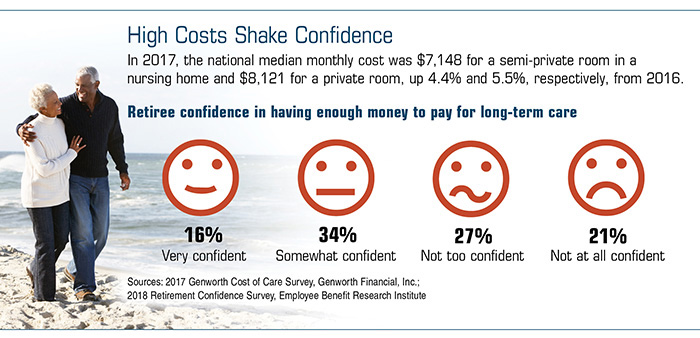More About Pacific Prime
More About Pacific Prime
Blog Article
Not known Facts About Pacific Prime
Table of ContentsAll about Pacific PrimeThe smart Trick of Pacific Prime That Nobody is DiscussingThe Ultimate Guide To Pacific PrimeOur Pacific Prime DiariesUnknown Facts About Pacific Prime

This is since the information were gathered for a period of strong economic efficiency. Of the estimated 42 million people that were uninsured, just about regarding 420,000 (about 1 percent) were under 65 years old, the age at which most Americans end up being eligible for Medicare; 32 million were grownups between ages 18 and 65, around 19 percent of all adults in this age; and 10 million were youngsters under 18 years of age, about 13.9 percent of all children (Mills, 2000).
These price quotes of the number of persons uninsured are created from the yearly March Supplement to the Existing Population Study (CPS), performed by the Census Bureau. Unless otherwise kept in mind, national price quotes of people without medical insurance and percentages of the population with various sort of coverage are based on the CPS, one of the most commonly utilized source of quotes of insurance policy protection and uninsurance rates.
The 8-Minute Rule for Pacific Prime

Still, the CPS is particularly valuable because it generates yearly quotes relatively quickly, reporting the previous year's insurance policy coverage estimates each September, and since it is the basis for a constant collection of quotes for greater than 20 years, permitting evaluation of patterns in insurance coverage gradually. For these reasons, along with the considerable usage of the CPS in various other research studies of insurance protection that are offered in this record, we count on CPS estimates, with constraints noted.

The price quote of the number of without insurance people increases when a population's insurance coverage status is tracked for numerous years. Over a three-year period starting early in 1993, 72 million individuals, 29 percent of the U.S. https://padlet.com/pacificpr1me/my-harmonious-padlet-xyem37dpr2sq1yce. population, were without coverage for at least one month. Within a solitary year (1994 ), 53 million individuals experienced at least a month without insurance coverage (Bennefield, 1998a)
6 out of every ten without insurance adults are themselves employed. Although working does boost the probability that one and one's household members will have insurance, it is not a warranty. Even members of family members with two permanent breadwinner have practically a one-in-ten opportunity of being without insurance (9.1 percent uninsured rate) (Hoffman and Pohl, 2000).
The 7-Minute Rule for Pacific Prime
New immigrants make up a substantial proportion of people without medical insurance. One evaluation has actually connected a substantial portion of the current development in the dimension of the U.S. without insurance populace to immigrants that got here in the country in between 1994 and 1998 (Camarota and Edwards, 2000). Recent immigrants (those who pertained to the USA within the previous four years) do have a high price of being without insurance (46 percent), but they and their kids make up simply 6 percent of those without insurance coverage country wide (Holahan et al., 2001).
The relationship in between wellness insurance and accessibility to care is well developed, as documented later on in this phase. Although the partnership in between medical insurance and health outcomes is neither straight nor easy, a considerable professional and wellness services research study literature links wellness insurance policy protection to enhanced access to care, better quality, and boosted personal and populace health and wellness status.
Levels of analysis for analyzing the impacts of uninsurance. This discussion of wellness insurance protection focuses primarily on the united state population under age 65 due to the fact that essentially all Americans 65 and older have Medicare or other public insurance coverage. It focuses especially on those without any health insurance policy for any size of time.
The Definitive Guide to Pacific Prime
The problems faced by the underinsured are in some areas comparable to those encountered by the uninsured, although they are generally much less serious. maternity insurance for expats. Uninsurance and underinsurance, however, include distinctly different plan issues, and the strategies for addressing them might differ. Throughout this research study and the five records to follow, the major focus gets on persons with no medical insurance and thus no assistance in spending for wellness care past what is offered through charity and safeguard institutions
Wellness insurance policy is a powerful factor influencing receipt of care due to the fact that both clients and doctors react to the out-of-pocket cost of services - https://pacific-prime-45752335.hubspotpagebuilder.com/blog/pacific-prime-your-trusted-source-for-comprehensive-insurance-solutions. Wellness insurance policy, nonetheless, is neither needed neither adequate to access to medical services. The independent and direct effect of health insurance protection on accessibility to health solutions is well developed.
Others will acquire the healthcare they need also without medical insurance, by Discover More Here paying for it expense or seeking it from companies who provide care complimentary or at highly subsidized prices. For still others, medical insurance alone does not make certain invoice of care due to other nonfinancial barriers, such as a lack of healthcare carriers in their neighborhood, minimal accessibility to transport, illiteracy, or linguistic and social differences.
Not known Facts About Pacific Prime
Official study concerning uninsured populaces in the United States dates to the late 1920s and early 1930s when the Committee on the Cost of Medical Treatment created a collection of records concerning funding physician office sees and hospital stays. This concern came to be salient as the numbers of medically indigent climbed during the Great Depression.
Report this page